chapter
05
How Long Do Braces Take?
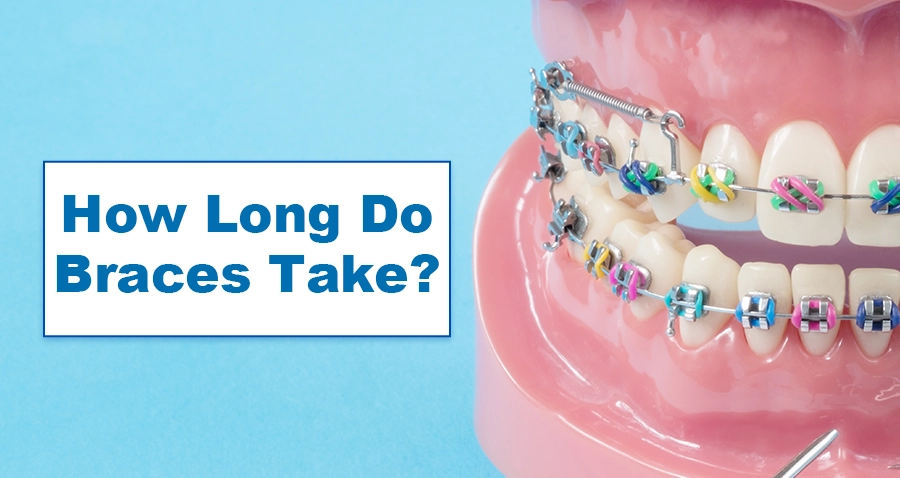
Are you considering braces to enhance your smile and improve your oral health? You’re not alone! Many people wonder “how long do braces take” to achieve the desired results.
This comprehensive guide will delve into the factors that influence the duration of braces treatment, typical treatment times to expect, and tips for shortening braces treatment time. Let’s explore how you can get the smile you’ve always wanted in the shortest time possible!
How Long Do Braces Take? Well, It Depends...
The duration of braces treatment can be influenced by a variety of factors, including…
- The severity of misalignment
- The type of braces used
- Patient compliance with the orthodontist’s instructions
…and whether the patient has all their adult teeth grown in at the start of treatment.
Understanding these factors is crucial for setting realistic expectations and achieving the best possible results. Let’s delve deeper into each factor to get a clearer picture of how long braces might take for your unique case.
The Severity of Misalignment
The severity of misalignment plays a significant role in determining the treatment duration. More complex cases of misaligned teeth will require longer durations of braces treatment.
Adult patients with more complex misalignments may need longer treatment times compared to children or teenagers.
Not all misalignments are created equal…
Some individuals may require only minor adjustments to their teeth, while others may have more severe issues, such as crooked teeth, that need extensive treatment. In any case, your orthodontist will assess your teeth’s condition and create a customized treatment plan that addresses your specific needs.
Are Braces or Invisalign Faster?
The type of braces used for your treatment can also impact the duration. There are various types of braces available, including traditional metal, clear ceramic braces, and Invisalign.
Standard metal braces are the most commonly used braces for most children and teens. They generally work well for most types of treatment and work very quickly. There are some specific types of treatments that standard metal braces may treat more quickly.
Ceramic braces, also known as clear braces, function similarly to metal braces but are less noticeable due to their tooth-colored hue. Many adults prefer clear braces so they are less noticeable. Generally speaking, the treatment time for clear braces vs. metal braces will be almost the same.
Clear aligners, like Invisalign, are an alternative to braces that utilize custom-made trays to gradually straighten teeth. This option is very popular amongst adults and some teenagers. Specific types of cases may work well with Invisalign, however there are some cases that may require additional time if Invisalign is used.
Your orthodontist will recommend the most suitable type of braces for you based on the complexity of your misalignment and your personal preferences.
Patient Compliance Affects Treatment Time
Patient compliance is a crucial factor in determining the duration of braces treatment.
Adhering to the orthodontist’s instructions and care plans…
…including maintaining proper oral hygiene, wearing your elastics as instructed, and not missing your appointments…
…can help reduce treatment time and achieve proper jaw alignment. Following your orthodontist’s recommendations is essential for successful treatment and avoiding any setbacks that might prolong your braces journey.
Keep in mind that even after the braces treatment is complete, you will need to wear a clear retainer to prevent further tooth movement. In case of any damages to your braces, such as broken wires or brackets, inform your orthodontist immediately to avoid a setback of a few weeks.
Patient compliance is key to achieving a beautiful and healthy smile in the shortest time possible.
Common Treatment Times for Braces
While the treatment times for braces may vary depending on individual circumstances, there are some general guidelines that can help you understand what to expect. Let’s explore the typical treatment times based on the complexity of the case: mild, moderate, and severe.
Mild Orthodontic Cases
Mild cases typically take between 6 and 12 months to complete. Mild cases generally involve minor misalignment issues.
Many mild cases are people who once had braces as a teenager and had their teeth shift a bit as an adult. These cases are generally straightforward and quick.
Treatment for mild cases may involve traditional metal braces, ceramic braces, self-ligating braces, or Invisalign treatment in combination with fixed appliances. The treatment duration for mild cases can range from as short as 6 to 12 months, depending on the individual’s needs and the chosen treatment method.
Braces or Invisalign are both commonly used to treat mild cases. Braces tend to be the less expensive option for shorter treatment times.
Let’s look at the patient below for an example of a mild case:
Patient #1 - Mild Case With Lower Crowding
This patient…
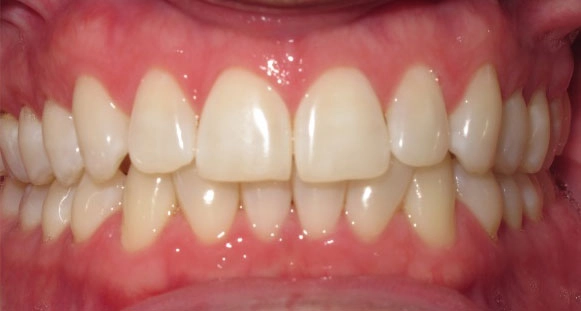
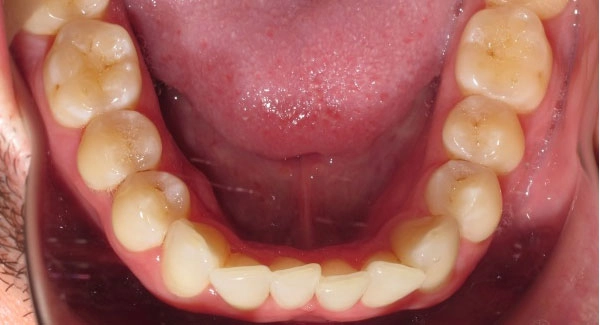
- Had braces as a teenager
- Didn't wear a retainer as a young adult
- Experienced shifting of his lower teeth
…and now he wants them straight again.
His bite was good and the upper teeth were already pretty straight. This patient completed orthodontic treatment in just 3 months and his teeth were completely corrected.

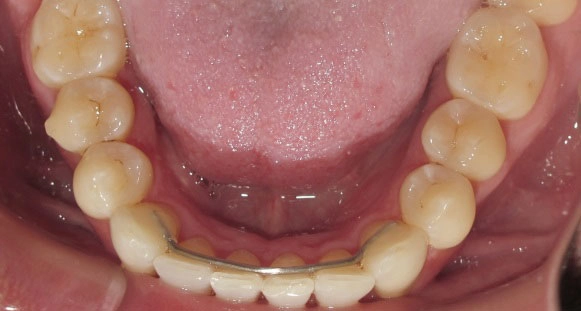
Because we didn’t have to change his bite or worry much about his upper teeth, the length of treatment was very short.
Moderate Orthodontic Case
Moderate cases refer to orthodontic issues that can typically be addressed with braces or Invisalign between 12 to 24 months. Most orthodontic patients fit into this category (our average treatment time in our office is 16 months)
Let’s look at a patient below for an example of a moderate orthodontic case:
Patient #2 - Moderate Case With an Underbite
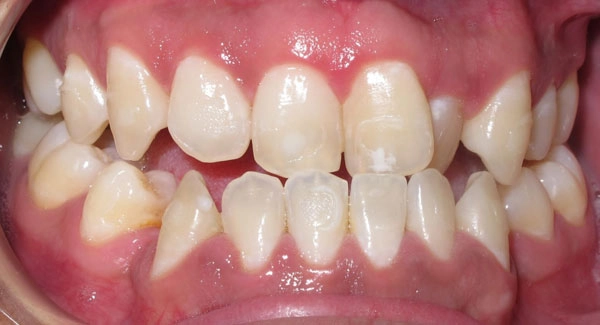
This patient had…
- Severe Crowding
- An Underbite
- A Crossbite
- Missing Lower Teeth
…plus several other tooth alignment issues.
This patient was treated with a combination of braces and Invisalign in just under two years at Premier Orthodontics and finished with a fabulous result that looked like this.

Severe Orthodontic Cases
Severe cases of adult braces typically involve moderate to severe misalignment or malocclusion that may require two to three years of treatment to achieve the desired results. Factors such as patient compliance, type of braces, and degree of misalignment can impact the treatment time for severe cases.
Treatment for severe cases typically lasts up to 36 months or longer, and there may be additional procedures needed outside of braces to ensure proper jaw alignment and a beautiful smile. Additional procedures may include dental treatment or jaw surgery.
We will look at two examples of severe cases below:
Patient #3 - Severe Case With a Crossbite and Tooth Damage
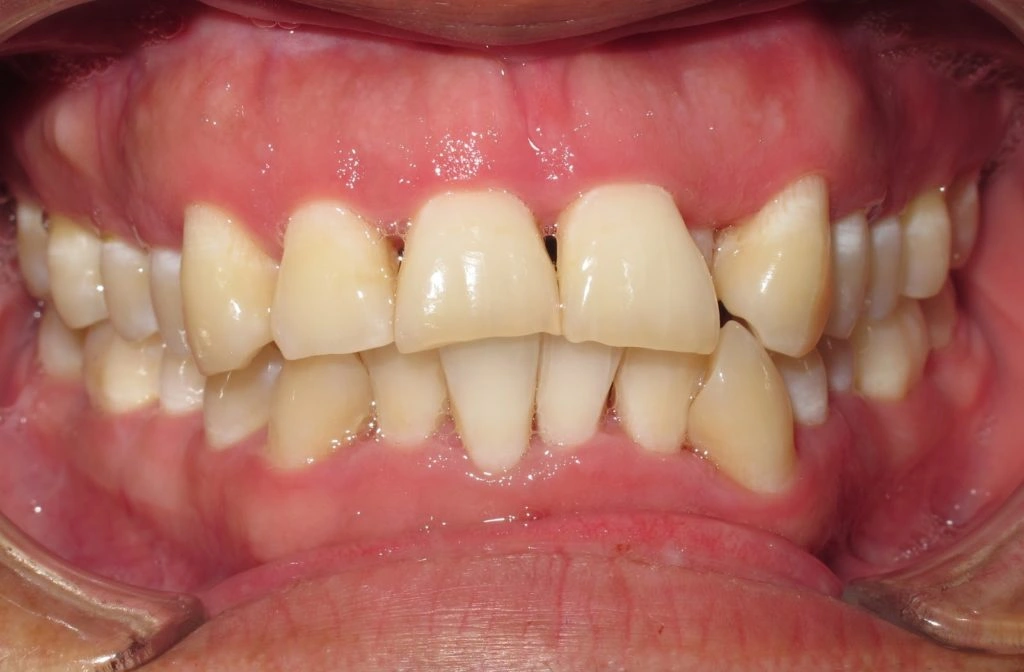

This patient had…
- Severe Crowding
- Damaged teeth due to a bad bite
- A Crossbite
…plus several other bite issues
He had always wanted braces but his parents couldn’t afford it. When he was in his forties, he decided he could fit braces into his budget and he finally got the smile he’s been wanting.
He was treated with braces for 2 years at Premier Orthodontics and after he had some dental work to repair the damaged teeth, his smile looked like this.

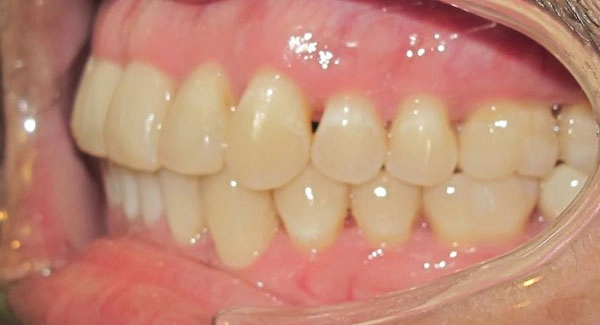
Based on these three very different examples, you can see that the answer to “How Long Do Braces Take?”…
…really — depends.
Patient #4 - Severe Case With a Severe Bite Discrepency
This patient had a severe bite discrepancy. Her case required a comprehensive approach to address the issue, combining braces and orthognathic surgery.
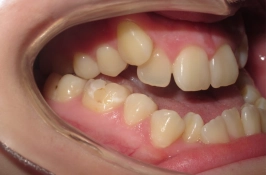
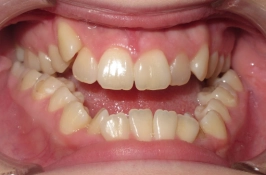
To tackle her severe bite problem, our patient underwent a treatment plan that integrated dental braces and orthognathic surgery with an oral surgeon. This tailored approach allowed us to achieve the best possible outcome, ensuring both functionality and aesthetics were restored.
Watch the video below to learn more about orthognathic surgery and braces.

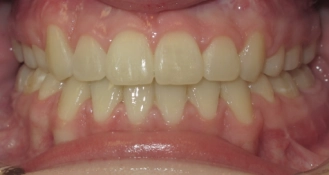
Watch the video below to learn more about orthognathic surgery and braces.
Severe cases of braces typically involve moderate to severe misalignment or malocclusion that may require two to three years of treatment to achieve the desired results. Factors such as patient compliance, type of braces, and degree of misalignment can impact the treatment time for severe cases.
Additionally, many severe cases may require additional treatment beyond braces or Invisalign alone. The treatment for severe cases typically lasts up to 36 months or longer, ensuring proper jaw alignment and a beautiful smile.
Do Braces Take Longer For Adults Than Children or Teenagers?
Kids and teenagers’ teeth generally move faster than adults. This is just biology– teeth, when in the growing phase, tend to move and shift more quickly.
The age of the patient, however, isn’t the only factor that determines treatment length. There are times that adult braces can take less time than children or teenagers.
The length of braces treatment may be extended for children or teenagers…
- If the orthodontist is still waiting for a child’s teeth to fully grow in.
- If a child or teen’s jaw is still growing. (the orthodontist will often need to wait until growth is finished to complete treatment)
- If a child or teenager does not wear their elastics or maintain good oral hygiene.
Because adults have their full set of teeth and their jaws are finished growing…
…and most adults are better at brushing their teeth than kids…
…the total treatment length of adult braces (on average) is actually less than braces for kids.
How Long Do Braces Take Compared to Invisalign?
Some tooth and bite problems may be treated more quickly with traditional braces—others will be better treated with Invisalign.
The type of tooth and bite problems that are treated more quickly with braces would include:
- Teeth that are high in the mouth that need to be pulled down
- Missing teeth that require closing large amounts of space
- Teeth that are really high up and need to be brought down
- Patients who require tooth extractions or larger bite correction
For most patients, the length of treatment will be relatively similar whether they use braces or Invisalign. Teeth move at a certain rate in your mouth…
…regardless of the type of material moving the teeth.
Tips for Shortening Braces Treatment Time
While the duration of braces treatment is primarily determined by the severity of misalignment and the type of braces used, there are steps you can take to potentially shorten your treatment time.
Here are some tips to help you achieve the smile you’ve always wanted as quickly as possible.
Proper Oral Hygiene
Maintaining proper oral hygiene during your braces treatment can help expedite the process by keeping your teeth and gums healthy. Proper oral hygiene entails brushing your teeth at least twice a day with fluoride toothpaste and a soft-bristled toothbrush, flossing once daily, and brushing the tongue.
Additionally, it is imperative to visit the dentist regularly for check-ups and cleanings. Specialized tools like floss threaders and interdental brushes can help address the oral hygiene challenges associated with braces. By ensuring that your teeth and gums are in optimal condition, you can prevent any delays in treatment due to oral health issues such as tooth decay or gum inflammation.
Diet and Lifestyle Choices
Your diet and lifestyle choices can have a significant impact on your braces treatment duration. Consumption of sticky, hard, or crunchy foods can result in the detachment of components of the braces, leading to delays in treatment. Avoid hard and sticky foods like nuts, caramels, and crunchy fruits and vegetables while wearing braces.
Being mindful of what you eat and drink can help prevent damage to your braces and prolong the treatment time. If you accidentally damage your braces, such as breaking a wire or detaching a bracket, inform your orthodontist immediately to avoid any setbacks in treatment.
Regular Orthodontic Appointments
Attending regular orthodontic appointments is crucial for timely adjustments and progress monitoring. During these appointments, your orthodontist will assess the progress of your braces, make any necessary adjustments, and address any questions you may have. Regular orthodontic appointments should be scheduled at intervals of 4-8 weeks.
By adhering to the recommended appointment schedule, you can ensure that your treatment progresses smoothly and efficiently. Following your orthodontist’s advice and maintaining proper oral hygiene will not only shorten your braces treatment time, but also help you achieve a healthy and beautiful smile.
Summary
In conclusion, the duration of braces treatment depends on several factors, including the severity of misalignment, type of braces, and patient compliance. By understanding these factors and following the tips provided, you can potentially shorten your braces treatment time and achieve a beautiful, healthy smile sooner.
Remember, a confident smile is well worth the time and effort invested in braces treatment. Keep your eyes on the prize, and embrace the journey to a stunning smile that will last a lifetime.
Schedule a Free Adult Braces Consultation
You can schedule a 100% free consultation with Premier Orthodontics to find out:
At your initial exam and consultation you’ll discover:









